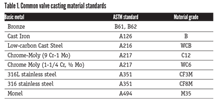NAM Monday Economic Report – November 10, 2014
Last week, we received a number of encouraging reports on the state of the manufacturing sector and the U.S. economy.
On the other hand, export growth slowed, likely due to the softer global economy. Indeed, the U.S. trade deficit widened in September to its highest point since May on reduced goods exports. Lower petroleum prices accounted for some of this shift, but it does not explain all of it. For manufacturers, the dampened demand overseas has kept U.S.-manufactured goods exports sluggish so far this year. Using updated data on Trade Stats Express, U.S.-manufactured goods exports have increased 2.2 percent through the first three quarters of 2014 relative to over the same time frame in 2013. This represents a slight deceleration from last year’s 2.6 percent pace. Fortunately, we have seen positive growth in our export sales year-to-date to our five largest trading partners: Canada (up 0.6 percent), Mexico (up 6.1 percent), China (up 8.2 percent), Japan (up 0.8 percent) and Germany (up 6.9 percent).
Meanwhile, manufacturers added 15,000 net new workers in October, improving from softer data points in August and September. At the same time, the figures from the prior two months were revised higher. So far this year, the sector has averaged 12,800 additional hires on average each month. While we would like to see these gains more widespread, the stronger data point for October is consistent with the recent pickup in activity overall. Average weekly earnings in the sector were also higher, up 1.6 percent and 5.1 percent over the past one and two years, respectively. In the larger economy, nonfarm payrolls rose by 214,000 in October, and they have now increased by at least 200,000 for nine straight months. The unemployment rate fell to 5.8 percent, its lowest level since July 2008.
Labor productivity growth in the manufacturing sector has also been promising, rising 3.2 percent during the third quarter. Manufacturing labor productivity has exceeded 3 percent in each of the three quarters so far in 2014, which represents a nice increase from the 1 percent and 2 percent annual gains in 2012 and 2013, respectively. In the third quarter, manufacturing output rose a solid 4.1 percent, helping to push unit labor costs down 0.7 percent. Lower unit labor costs help to make the sector more competitive globally. We have seen them fall 5.4 percent since the end of the recession, with even steeper declines in the durable goods sector.
There were some weaker data points out last week, too. New factory orders declined 0.6 percent in September. While lower aircraft sales can explain much of that decrease, activity was soft in the broader market. Excluding transportation, new manufactured goods orders were unchanged from the month before. Nonetheless, over the past 12 months, factory orders excluding transportation have risen 3.2 percent, which suggests modest year-over-year growth overall. Similarly, construction spending in the manufacturing sector has also risen over the past 12 months, up a whopping 15.8 percent, suggesting that more dollars have been devoted to investment as the outlook has improved. Yet, manufacturing construction spending declined 1.1 percent in September, with private, nonresidential construction activity also down for the month.
Next week is a light week on the economic front. The highlights include small business sentiment from the National Federation of Independent Business on Tuesday, job openings on Thursday and retail sales figures on Friday. In addition, we will get real GDP by industry data on Thursday for the second quarter. This will show the impact that manufacturers had on real GDP growth, which increased 4.6 percent in the second quarter.
Chad Moutray is the chief economist, National Association of Manufacturers.
RELATED CONTENT
-
Ancient Roman Valves
The story of water supply in the ancient Roman Empire is grand.
-
The Biggest Valves: Sizes Growing in Step with Greater Demand
Valve manufacturers that have the expertise, skills, equipment and facilities to produce large valves are rare.
-
The Final Control Element: Controlling Energy Transformation
When selecting control valves, be sure to properly evaluate the process conditions to identify potential issues and select the proper management techniques.








 Unloading large gate valve.jpg;maxWidth=214)

